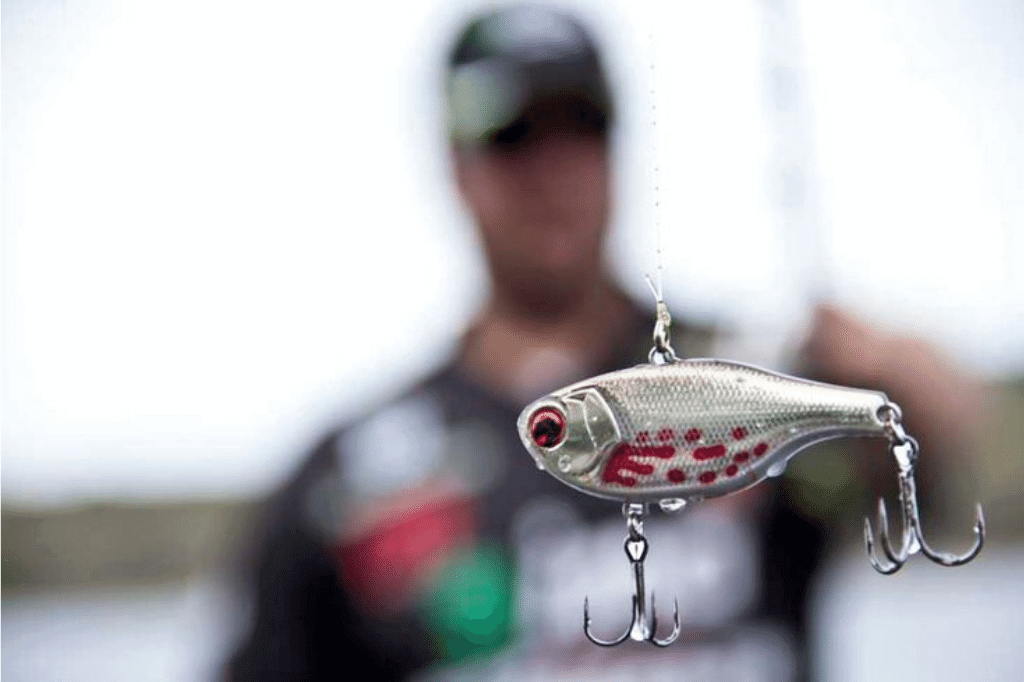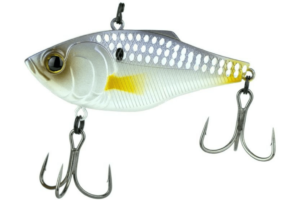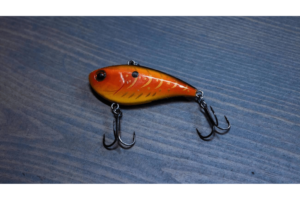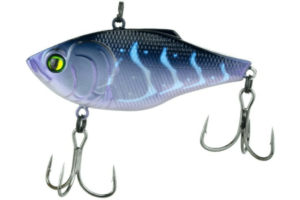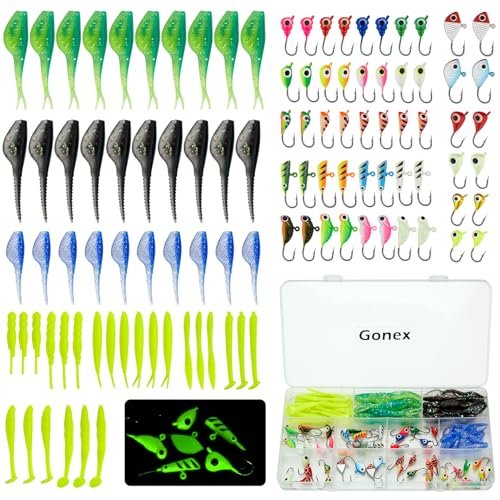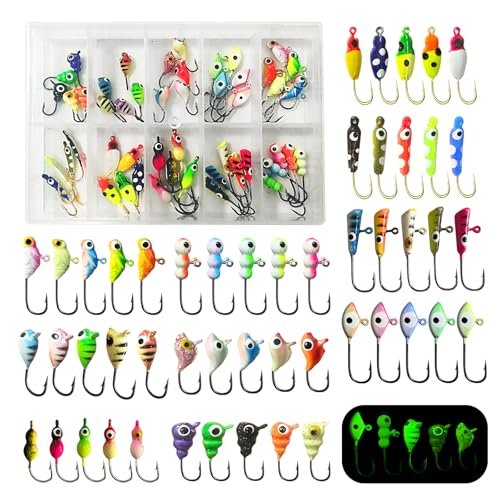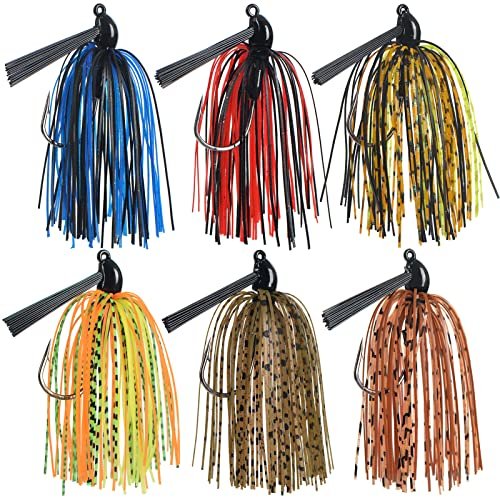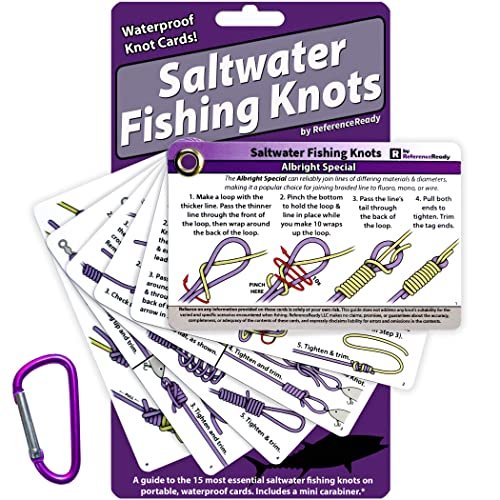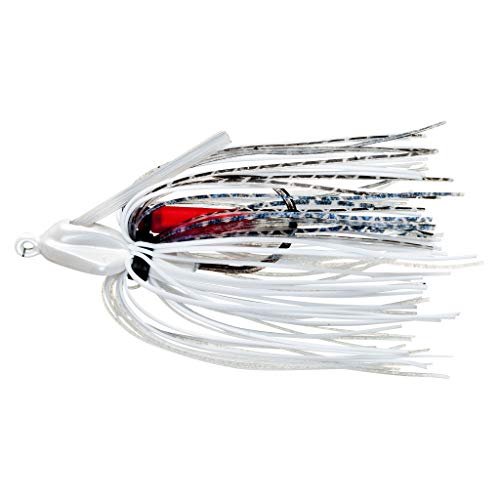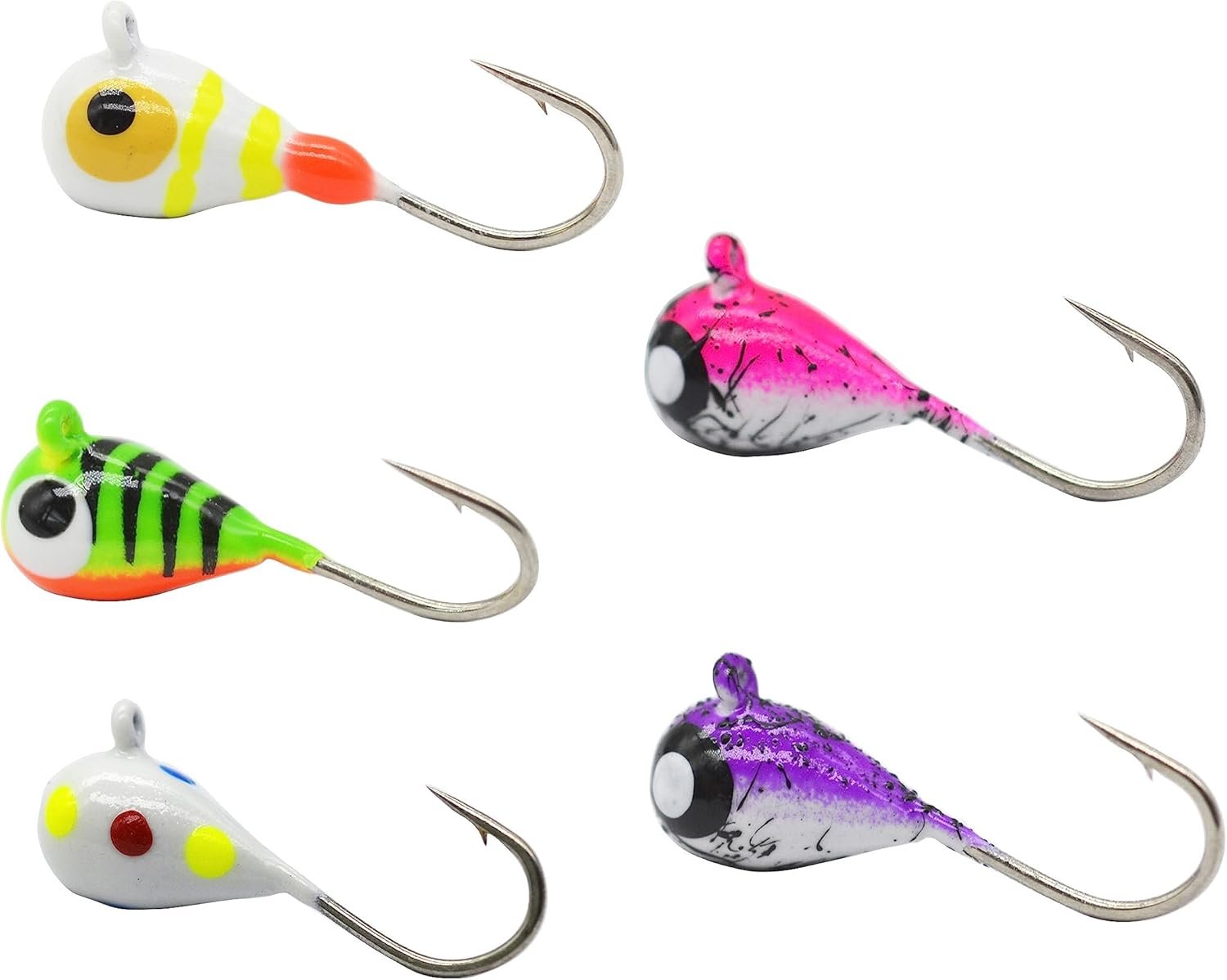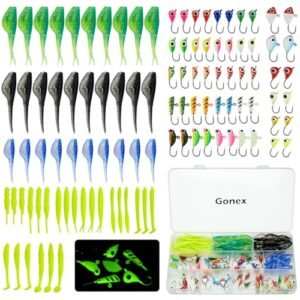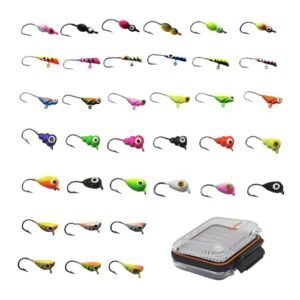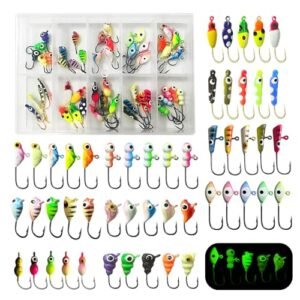Anglers appreciate lipless crankbait tactics for their ability to cover water quickly and attract fish from afar. These lures sink at a steady rate and can be retrieved at varying speeds, making them ideal for targeting a range of species, including bass.
Their design allows for long casts and their lack of a lip means they don’t get snagged easily, allowing for fishing in heavy cover or open water. The vibrating action and noise of a lipless crankbait make it irresistible to predatory fish, especially when bites are tough to come by. Perfect for year-round use, these lures should be a staple in any angler’s tackle box.
Introduction To Lipless Crankbait Tactics
Anglers everywhere buzz about the thrill of using lipless crankbait tactics. These versatile lures are must-haves in any tackle box. Unlike their lipped counterparts, lipless crankbaits don’t have a protruding lip but are designed to cut through water with a tight wobble and distinctive sound that fish can’t resist.
The Lure Of Lipless Crankbait Tactics
Lipless crankbaits stand out for their ability to reach deep waters and cover a large area quickly. With no lip to restrict their dive, they plummet to the desired depth and are perfect for scanning the depths for hidden predators.
- Easy to cast due to their aerodynamic shape
- Vibrations and noise attract attention underwater
- Effective in various fishing conditions
Why Choose Lipless For Bass
Bass can’t ignore the unique sound and movement of lipless crankbaits. These lures are ideal for targeting bass year-round. Whether in warm or cold water, they perform exceptionally well.
| Season | Technique |
|---|---|
| Spring | Shallow water retrieval |
| Summer | Deep water jigging |
| Fall | Burn and kill technique |
| Winter | Slow rolling near the bottom |
With their no-lip design, these crankbaits move freely and can be worked faster or slowed down to match the bass’ activity level. Anglers find success using a yo-yo retrieve to mimic an injured baitfish.
Gear Essentials For Lipless Crankbait Tactics
When diving into the world of lipless crankbait fishing, your success hinges on the right gear. Expert anglers know that each element plays a crucial role. Let’s look at the gear essentials to maximize your catch.
Selecting The Right Rod For Lipless Crankbait Tactics
Fishing with lipless crankbaits demands a rod that offers the perfect balance of power and sensitivity. A medium-heavy rod with a fast action tip is ideal. This combination allows you to feel the lure’s vibration and ensures strong hooksets. Rods around 6’6″ to 7′ in length give the best casting distance and accuracy.
Features to consider:
- Length: 6’6″ to 7″
- Power: Medium-heavy
- Action: Fast
Choosing Your Reel For Lipless Crankbait Tactics
A quality reel complements your rod’s performance. For lipless crankbaits, a baitcasting reel with a gear ratio of 6.4:1 strikes a good balance. It provides enough speed to keep the lure moving and allows quick retrieves. Look for reels with a smooth drag system to handle the fight.
Key reel specs:
| Type | Gear Ratio | Drag System |
|---|---|---|
| Baitcasting | 6.4:1 | Smooth |
The Importance Of Line Selection
The line connects you to the fish. A no-stretch, abrasion-resistant line is a must. Fluorocarbon in 12-17 pound test range is a top choice. It’s nearly invisible in water and transmits strikes well. Match your line to the conditions and target species for best results.
Line tips: for lipless crankbait tactics
- Use fluorocarbon for sensitivity and low visibility.
- 12-17 pound test suits most situations.
- Match line strength to the fish you’re targeting.
Lipless Crankbait Varieties
Lipless crankbaits stand as a staple in the tackle boxes of seasoned anglers. These versatile lures attract a wide variety of fish, thanks to their unique designs and characteristics. Understanding the varieties available can greatly enhance fishing success. Explore the differences in size, weight, color patterns, and sound properties to choose the perfect lipless crankbait.
Differences In Size And Weight
Lipless crankbaits come in various sizes and weights to match the fishing conditions and targeted species. Smaller sizes are ideal for finesse fishing or when targeting skittish fish. Heavier versions cast further and sink faster, perfect for deep waters or windy days.
| Size (inches) | Weight (ounces) | Typical Use |
|---|---|---|
| 2 – 2.5 | 1/8 – 1/4 | Shallow water |
| 2.5 – 3.5 | 1/4 – 1/2 | Versatile fishing |
| 3.5 – 5 | 1/2 – 1 | Deep water |
Color Patterns And Their Effects
- Natural hues mimic real fish, ideal for clear water.
- Bright colors stand out in murky conditions.
- Reflective patterns catch light, attracting attention.
Selecting the right color pattern is crucial for triggering strikes. Fish often rely on sight to locate prey, making the choice of color a key factor in successful angling.
Sound And Vibration Considerations
Lipless crankbaits produce distinctive sounds and vibrations that can be the difference between a good and a bad fishing day. Internal rattles create noise, drawing fish from afar. Vibration patterns vary between models and can mimic the movement of prey.
- High-pitched rattles for active fish.
- Subtle vibrations for pressured waters.
- Low-frequency sounds for murky conditions.
Understanding these elements ensures anglers present the most enticing lure to their target fish.
Seasonal Strategies
Mastering seasonal strategies with a lipless crankbait tactics ensures year-round fishing success. Each season affects water conditions and bass behavior. Understanding these changes can greatly increase your catch rates. Here’s how to adapt your approach with a lipless crankbait tactics through the year.
Spring Awakening: Pre-spawn Tactics
Spring marks a thrilling time for bass fishing as water temperatures rise. Bass move to shallower waters to feed and prepare for spawning. This period demands vibrant and noisy lures to mimic the active prey. Use a lipless crankbait tactics to cover large areas quickly. Focus on areas with emerging vegetation and shallow flats. Retrieve your lure fast enough to create a tempting rattle but allow occasional pauses. These pauses often trigger strikes from following bass.
Summer Heat: Fishing The Thermocline
During summer, bass often retreat to deeper, cooler waters. This layer, known as the thermocline, holds oxygen-rich water where bass thrive. Identify the thermocline depth using a fish finder. Cast your lipless crankbait beyond this depth and use a yo-yo technique—a rhythmic lift and fall of the rod tip. This method keeps the lure in the cooler, oxygenated water longer, enticing deep-dwelling bass to strike.
Fall Frenzy: Targeting Aggressive Bass
Fall is a feeding bonanza for bass as they prepare for winter. Water cools, and bass become more aggressive. Capitalize on this by using red or orange crankbaits to mimic the seasonal colors of dying shad. Focus on transition areas where shallow water meets deeper channels. Bass often ambush prey in these spots during fall. A steady retrieve with intermittent faster twitches can provoke exciting strikes.
Winter Tactics: Slow And Steady
Winter calls for a subdued approach. Cold water slows down bass metabolism and activity. Use a lipless crankbait with a natural, muted color. Cast to potential hot spots like submerged structures or drop-offs. Employ a slow, steady retrieve. In winter, bass won’t chase a fast-moving lure. They prefer easy targets, making a slow-moving crankbait ideal.
These tips will help you harness the power of lipless crankbait tactics all year long. Remember, the right technique at the right time is key to success.
Techniques For Success
Fishing with lipless crankbait tactics is an art that requires mastering certain techniques. These lures are versatile and effective when used correctly. Below are some proven methods to increase your success on the water.
The Yo-yo Technique
This method imitates a dying baitfish. Start with a smooth cast. Allow the lure to sink. Then, reel in slack line. Swiftly lift your rod tip. The bait will shoot upwards. Let it fall with a semi-slack line. This motion mimics an injured fish. Predators find this irresistible.
Burn And Kill Approach
Create a sense of urgency with this technique. Cast out your crankbait. Start reeling fast. This makes the bait dart through the water. Suddenly stop. The lure will flutter down. This sudden change often triggers bites. Fish think the prey is escaping then dying.
Ripping Through Vegetation
Lipless crankbaits excel around weeds. Cast near vegetation. Keep your rod tip up. Use a steady retrieve. When you feel weeds, rip the lure free. This sudden movement can provoke strikes. Fish think the bait is trying to escape. Be ready for an aggressive bite.

Location And Habitat
Understanding where to cast your lipless crankbait is as crucial as the lure itself. Fish gravitate towards specific environments that meet their needs for feeding, breeding, and shelter. By mastering the art of locating these hotspots, anglers can dramatically improve their catch rate.
Identifying Productive Fishing Spots
Productive fishing spots often share common features. Clear water allows predators to spot your lure from a distance. Look for areas where baitfish swarm. These are prime spots for bass as they hunt in packs. Keep an eye on water temperature and clarity. Both can signal where fish might be feeding or resting.
Structure And Cover: Maximizing Opportunities
Bass love hiding spots. Submerged structures like logs, rocks, and man-made objects provide excellent cover. Cast your lure close to these areas. Use a steady retrieve to mimic wounded prey. Fish often strike when the lure swims near their hiding places.
Transition Zones And Bass Movement
Transition zones are areas where different habitats meet. These might be where shallow water deepens or where the lake bottom changes from sand to rock. Bass use these zones to travel and hunt. A lipless crankbait worked along these lines can tempt strikes from bass on the move.
- Scan for edges where fish transition from feeding to resting.
- Cast parallel to shorelines to keep your lure in the strike zone longer.
- Use maps and sonar to find underwater transition zones.
Troubleshooting Common Challenges
Troubleshooting Common Challenges with lipless crankbait tactics can transform a frustrating day into a successful fishing trip. Let’s explore effective strategies for common issues.
Dealing With Snags And Hang-ups
Fishing with lipless crankbaits often leads to snags. Here are some tips:
- Choose weedless setups: Use crankbaits designed to resist snags.
- Adjust your retrieval speed: Slow down to avoid hooks catching on debris.
- Use a snapping motion: A sharp pull can free your lure from hang-ups.
Adjusting To Water Clarity
Water clarity can affect your success with lipless crankbait tactics. Consider these adjustments:
| Water Clarity | Lure Color | Technique |
|---|---|---|
| Clear | Natural shades | Steady retrieval |
| Murky | Bright or noisy | Vary speed and action |
Overcoming Fishing Pressure
Fishing pressure can make bass wary of common lures. Try these tactics:
- Switch locations: Fish less crowded spots.
- Vary your lures: Use different sizes or colors.
- Change fishing times: Fish during quieter periods, like early morning or late evening.
Advanced Tips And Tricks
Lipless crankbaits are versatile lures that can turn a day of fishing into a story worth telling. Mastering their use requires skill, and a few advanced tips can elevate your angling game. Let’s dive into some expert advice to help you get the most out of these dynamic baits.
Customizing Your Crankbaits
Personal touches to your lures can make a big difference. Try these customizations:
- Change hooks: Swap to sharper, lighter ones for better hooksets.
- Add weight: Tune the bait’s fall rate with stick-on weights.
- Modify colors: Use paint or markers for a unique look.
Using Electronics To Your Advantage
Modern fishing electronics can transform your approach. Use them to:
- Locate structure where fish might hide.
- Identify baitfish schools to cast nearby.
- Track your lure’s depth to keep it in the strike zone.
Secrets From The Pros
Pros know best. Here are their secrets:
| Tip | Benefit |
|---|---|
| Slow retrieve in cold water | Triggers more bites |
| Rip bait through vegetation | Attracts attention |
| Vary retrieval speed | Keeps fish guessing |
Conservation And Ethical Angling
Lipless crankbaits lure anglers and bass with their unique action and sound. Yet, there’s more to angling than the catch. Responsible practices ensure fish populations thrive for generations. Let’s dive into how anglers can protect our watery ecosystems.
Catch And Release Best Practices
Releasing fish unharmed sustains healthy populations. Here are key steps:
- Wet your hands before handling fish to protect their slime coat.
- Use barbless hooks for easier release and less injury.
- Keep the fish in water as much as possible while you remove the hook.
- Support the fish horizontally when taking photos.
- Revive the fish by moving it back and forth to increase water flow over its gills.
Impact Of Angling On Bass Populations
Bass populations feel the pressure from angling activities. Here’s the impact:
| Activity | Impact |
|---|---|
| Overfishing | Reduces mature bass numbers |
| Habitat disruption | Destroys spawning areas |
| Pollution | Impairs water quality, affecting bass health |
Anglers play a role in conservation. Use selective harvest and practice catch and release to balance the ecosystem.
Frequently Asked Questions
What Are Lipless Crankbaits Good For?
Lipless crankbaits excel at covering water quickly and enticing aggressive strikes from bass. They’re effective in various depths and ideal for fishing through grass.
When To Throw A Lipless Crankbait?
Throw a lipless crankbait when targeting bass in shallow water, during spring or fall, or when fishing in weedy areas. Use it to cover water quickly and trigger aggressive strikes.
Is A Rattle Trap A Lipless Crankbait?
Yes, a rattle trap is a type of lipless crankbait known for its loud sound and vibration during retrieval.
How Far Down Do Lipless Crankbaits Go?
Lipless crankbaits dive based on retrieve speed, typically reaching depths of 3 to 6 feet. Adjust your retrieval rate to control depth.
Conclusion
Exploring the versatility of lipless crankbaits can significantly enhance your fishing trips. They are effective in various waters and seasons, making them a top choice for anglers. Whether targeting bass or other species, these lures promise excitement and success. Embrace the thrill of fishing with lipless crankbaits and experience the difference on your next outing.

